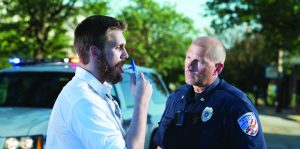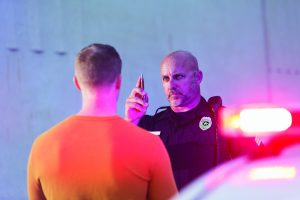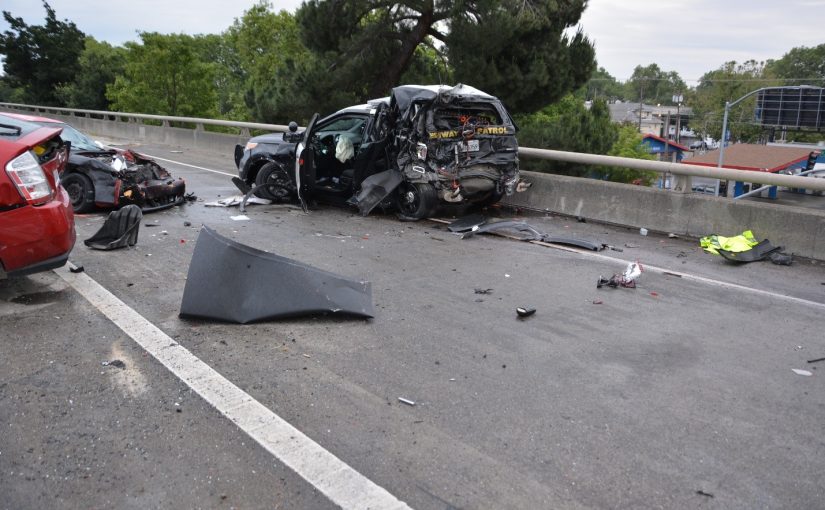The statistics are out there. Fatal traffic crashes, which surged during the height of the COVID-19 pandemic, continue to occur at alarming rates.1 Crashes caused by alcohol and drug impairment still claim too many innocent lives every year. This is not just an individual state’s problem; communities across the United States and around the globe are facing this issue. For example, Indiana has seen a consistent trend in the data. Since 2010, the number of people killed in fatal crashes involving drivers testing over the legal limit of alcohol has been eclipsed by those killed in fatal crashes involving drivers testing positive for at least one other impairing drug.2 It should be noted that just because the driver tests positive for an impairing non-alcohol substance, there is no guarantee the subject was impaired. Nonetheless, impaired drivers are responsible for a significant number of persons injured and killed every year.
Indiana has taken numerous steps over the years to try to combat the problem of impaired driving. The initial focus, as is the case with most states, was alcohol impairment. To combat this problem, every officer in Indiana is trained in Standardized Field Sobriety Testing as a part of their basic academy training. Indiana began training drug recognition experts (DREs) in 1988 to start combating the problem of impaired driving. In the early 2010s, Indiana added Advanced Roadside Impairment and Detection (ARIDE) training on a limited basis as funds would allow. As the data began to clearly show that drug-impaired driving was overtaking alcohol-impaired driving, the Indiana Criminal Justice Institute (ICJI) Traffic Safety Division began to focus more heavily on drug-impaired driving.
Around 2018, several initiatives were started or enhanced to try to combat the drug-impaired driving problem. A new focus on DRE training increased the number of DREs in Indiana from around 130 to more than 200, at no cost to individual agencies. ARIDE training also increased throughout the state with ICJI offering approximately 20 ARIDE classes each year. ICJI also provided additional funding to the Indiana Department of Toxicology to reduce their alcohol and drug testing backlog. This reduced the amount of time it took to get blood test results from nearly a year to as little as six weeks. With these initiatives, Indiana began to experience more enforcement for drug-impaired driving. In 2022, the state again increased ARIDE training throughout the state, still at no cost to local agencies.
A poll of ARIDE students (patrol officers) found that most are comfortable with making arrests for alcohol impaired driving. This is due to better knowledge of the impairing effects of alcohol, recognition of the odor of alcoholic beverages, training in validated standardized field sobriety testing, and access to portable breath test instruments.3 However, officers indicated that they were less comfortable with making arrests for drug-impaired driving. The officers were identifying the impairment but were not able to identify the cause of that impairment. Officers trained in ARIDE and DRE are more prepared to recognize the type of drug that may be causing the impairment; unfortunately, there were still not enough officers trained in ARIDE and DRE to effectively combat the drug-impaired driving crisis. There needed to be a way to make patrol officers more confident in knowing what was causing the impairments they were seeing in drivers.
Trying Something New
 Indiana embraced the emerging field of roadside oral fluid testing to combat the drug-impaired driving problem in late 2020. The states of Michigan and Wisconsin had already done pilot studies of roadside oral fluid testing using the SoToxa Oral Fluid Testing device. These studies showed that the device was accurate in detecting cocaine, methamphetamine, amphetamines, natural opiates, cannabis, and benzodiazepines. This drug panel covers a large swath of the drugs presently reported by the labs as being present in blood drawn from impaired drivers. Rather than starting with another pilot study, ICJI went to full implementation of the program in Indiana. ICJI used grant funding to purchase 80 units, along with the needed testing materials for the devices. The focus for placement was on the counties with the highest number of fatal crashes involving drug-positive drivers. The devices were distributed across the state at no cost to the agencies. Within a year, an additional 120 units were put into service. These units were initially distributed in densely populated areas. This was a trial to see if more units in a small geographical area resulted in more use and more drug-impaired arrests. It was determined, however, that placing the units in rural areas was more beneficial. In 2023, the Indiana State Police joined the program with testing equipment distributed to each post. To be issued an instrument, the agency had to have a standardized field sobriety testing (SFST) instructor on staff who had been trained in ARIDE or was a certified DRE. These officers were trained on how to use the instrument, and they then trained additional officers at their departments and neighboring agencies in its use.
Indiana embraced the emerging field of roadside oral fluid testing to combat the drug-impaired driving problem in late 2020. The states of Michigan and Wisconsin had already done pilot studies of roadside oral fluid testing using the SoToxa Oral Fluid Testing device. These studies showed that the device was accurate in detecting cocaine, methamphetamine, amphetamines, natural opiates, cannabis, and benzodiazepines. This drug panel covers a large swath of the drugs presently reported by the labs as being present in blood drawn from impaired drivers. Rather than starting with another pilot study, ICJI went to full implementation of the program in Indiana. ICJI used grant funding to purchase 80 units, along with the needed testing materials for the devices. The focus for placement was on the counties with the highest number of fatal crashes involving drug-positive drivers. The devices were distributed across the state at no cost to the agencies. Within a year, an additional 120 units were put into service. These units were initially distributed in densely populated areas. This was a trial to see if more units in a small geographical area resulted in more use and more drug-impaired arrests. It was determined, however, that placing the units in rural areas was more beneficial. In 2023, the Indiana State Police joined the program with testing equipment distributed to each post. To be issued an instrument, the agency had to have a standardized field sobriety testing (SFST) instructor on staff who had been trained in ARIDE or was a certified DRE. These officers were trained on how to use the instrument, and they then trained additional officers at their departments and neighboring agencies in its use.
Indiana uses the roadside oral fluid test results for probable cause only, much like a portable breath test. The officers must first document impairment based on their observations and field sobriety testing. Once impairment is documented and alcohol is ruled out as the likely cause of the impairment, the oral fluid testing device can be used. The results of this test are not evidentiary; however, they can contribute to the establishment of probable cause. The patrol officer is encouraged to contact an ARIDE-trained officer or DRE to further the investigation.
During the initial roll out of the instruments, some DREs were not in favor of using the instruments. DREs are highly trained in identifying drug impairment and many believed that officers using the instrument would not feel the need to involve a DRE if they had a positive result on the instrument. This led to the fear that roadside oral fluid testing would possibly be the end of the DRE program in Indiana. This fear was found to be completely unwarranted. In areas where a DRE and roadside oral fluid testing are both available, the DRE is being utilized more. For example, the author’s evaluations nearly tripled as a direct result of roadside oral fluid testing. When a patrol officer has already identified an impairment, merely being able to request roadside oral fluid testing is a boost of confidence to the officer. If the results are positive, the officer has that additional piece of information about what may be causing the observed impairment. One might speculate that a negative result may result in an officer abandoning a DUI investigation; however, Indiana’s experience shows that this is not the case. In most cases, officers identify the impairment and take an additional step to help identify the substance causing the impairment. The officers are now more confident in identifying that impairment (even with a negative result) after taking the extra step to request an oral fluid sample. Officers then seek out a DRE or ARIDE-trained officer to assist in making an impaired driving arrest.
Outcomes
Indiana tracks all uses of the oral fluid instrument by the agencies. Two studies were conducted by the author with the assistance of ICJI and other partners, and results were compiled to track the accuracy of roadside oral fluid use. The first study was conducted in the fall of 2021 during field certification training for DREs. The second was a field use study conducted in the summer of 2022. The first study compared the results of oral fluid tests to those of urine tests and to the DRE students’ drug category opinions. This study found that the oral fluid results were consistent with the urine results 90 percent of the time. It should be noted that urine shows past use, while oral fluid shows recent use. If the drug use was recent and had not been metabolized and eliminated in the urine yet, it may still show up in the oral fluid test. This study also found that the oral fluid testing results were consistent with DREs’ opinions 85 percent of the time. A DRE identifies the cause of the impairment that is psychoactive at the time. If a drug that cannot be tested by oral fluid is the most psychoactive at the time, the subject would likely exhibit signs of impairment inconsistent with the oral fluid results. This study was unable to confirm the accuracy of roadside oral fluid testing in regard to opiates and benzodiazepines. None of the subjects involved in this testing tested positive for benzodiazepines or natural opiates in oral fluids or urine.
The second study was a comprehensive look at the use of oral fluid testing and comparing it to blood results obtained in those cases and to the opinion of DREs. This study found that over half of the samples testing positive in oral fluid tested positive for more than one drug. The study first compared the oral fluid testing results to those of blood samples obtained in the case. An “accurate” result was determined to be when both tests had the same outcome (positive or negative for a substance). Cocaine was found to be accurate 93 percent of the time. Methamphetamine was found to be accurate 97 percent of the time. Amphetamines were found to be accurate 89 percent of the time. Opiates were found to be accurate 95 percent of the time. Cannabis was found to be accurate 81 percent of the time. Benzodiazepines were found to be accurate 29 percent of the time. When benzodiazepines are removed from the panel, oral fluid is consistent with the blood results 91 percent of the time.
False negatives in oral fluid were the most common “inaccurate” result, meaning that the drug was not indicated in oral fluid but was still found in the blood. This can be explained by lower testing thresholds of the lab when dealing with blood and the high testing thresholds in roadside oral fluid testing. During the time of this study, Indiana was inundated with Delta 8 and Delta 10 THC along with novel benzodiazepines. Cannabis is illegal in Indiana, and at the time of this study ,Delta 8 and Delta 10 were being sold as alternatives. These drugs are chemically similar to Delta 9 THC and could cause a positive test result in oral fluid testing and in blood screening. However, during blood confirmation, Delta 8 and Delta 10 THC would be reported negative for cannabis by the state lab. This likely explains why the accuracy of cannabis in the roadside oral fluid testing was lower than expected. Benzodiazepines are harder to pass through the oral fluid barrier, and the lab has an extensive panel for this drug in blood samples. This, in conjunction with the novel benzodiazepines that were common during this study time frame, helps to explain for the poor accuracy rate for benzodiazepines. Almost three-quarters of the “inaccurate” benzodiazepine results were cases where the lab identified the drug, but it was not identified in the oral fluid.
 The study also compared the results of oral fluid testing to the opinions of DREs. The study found that DREs did not rely on the results of the oral fluid test, but instead formed their opinion based on the clinical and physical indicators being displayed by the subject. Their opinions were usually based on what drug was most psychoactive at the time. Almost a third of the evaluations resulted in an opinion being made that was not consistent with the oral fluid. That is not to say that the oral fluid was wrong, there was likely a more psychoactive drug present at the time of the DRE’s observation. During this same study, the DREs’ opinions were confirmed by blood results 90 percent of the time.
The study also compared the results of oral fluid testing to the opinions of DREs. The study found that DREs did not rely on the results of the oral fluid test, but instead formed their opinion based on the clinical and physical indicators being displayed by the subject. Their opinions were usually based on what drug was most psychoactive at the time. Almost a third of the evaluations resulted in an opinion being made that was not consistent with the oral fluid. That is not to say that the oral fluid was wrong, there was likely a more psychoactive drug present at the time of the DRE’s observation. During this same study, the DREs’ opinions were confirmed by blood results 90 percent of the time.
Looking Ahead
In the nearly three years since implementation, more than 3,000 oral fluid tests have been performed. Roadside oral fluid testing has become accepted by the law enforcement community in Indiana. The number of drug influence evaluations has increased in correlation with the use of roadside oral fluid testing. The number of blood samples being sent to the lab in impaired driving cases has climbed significantly. More arrests for drug-impaired driving are being made. This is a result of the state’s increased focus on drug-impaired driving and the implementation of roadside oral fluid testing. All of this is making it safer for the motoring public on Indiana roadways. In 2023, Indiana has seen a decrease in fatal crashes of approximately 10 percent compared to the same time last year.4
Roadside oral fluid testing is an important tool in Indiana’s continued efforts to enhance enforcement effectiveness and reduce impaired driving crash fatalities. d
Notes:
1National Highway Traffic Safety Administration, “NHTSA Estimates Traffic Fatalities Continued to Decline in the First Half of 2023,” news release, September 28, 2023.
2Automated Reporting Information Exchange System (ARIES), Indiana State Police.
3Question was posed at ARIDE classes; no statistical data available.
4Indiana Criminal Justice Institute, internal data.
Please cite as
Matt Kling, “One State’s Experience with Oral Fluid Testing,” Police Chief Online, January 10, 2024.



